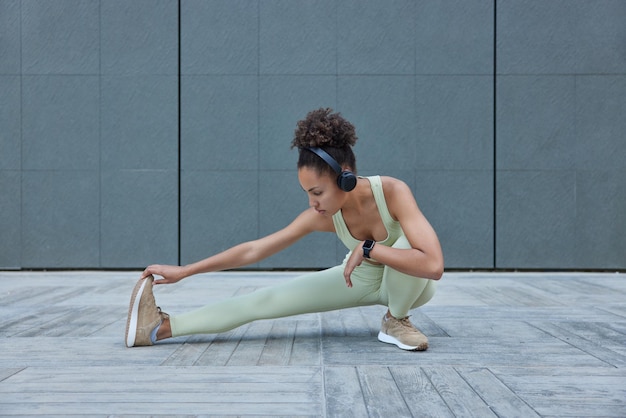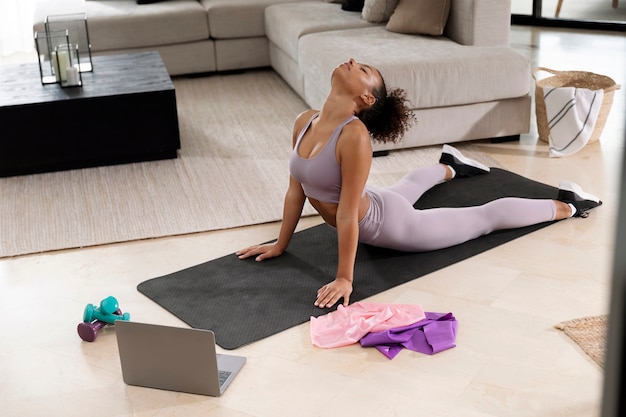Starting a fitness journey can be exciting—but it can also be overwhelming, especially if you're new to exercise or working with a tight schedule and limited equipment. The good news? You don’t need a gym membership or fancy gear to stay active and build strength. However, even well-intentioned efforts can backfire if common mistakes go unnoticed.
Many beginners unknowingly increase their risk of injury by skipping foundational practices or pushing too hard, too soon. This article highlights 12 of the most common pitfalls—and how to avoid them—so you can move safely, consistently, and effectively, no matter your schedule or experience level.
Jumping straight into exercise without warming up shocks your muscles and joints. A proper warm-up increases blood flow, improves mobility, and prepares your body for movement. Spend 5–10 minutes doing dynamic stretches like arm circles, leg swings, or light marching in place.

Form is more important than reps. Incorrect posture during bodyweight squats, push-ups, or planks can strain your back, knees, or shoulders. Take time to learn proper technique—watch free online tutorials or use a mirror to check alignment.
Enthusiasm is great, but overdoing it leads to soreness, burnout, and injury. Start with 2–3 short sessions per week (15–20 minutes) and gradually increase duration and intensity. Your body needs time to adapt.
Rest is when your muscles repair and grow stronger. Skipping recovery days increases fatigue and injury risk. Aim for at least one full rest day per week, and listen to your body—if you're sore or tired, take a break.
Dehydration reduces performance and increases muscle cramps and dizziness. Drink water throughout the day, especially before and after workouts. Keep a reusable bottle nearby as a reminder.
Many people unconsciously hold their breath while exerting effort, which spikes blood pressure and reduces oxygen flow. Practice rhythmic breathing—exhale during exertion (e.g., when pushing up in a push-up) and inhale during the easier phase.
Your core stabilizes your entire body. Failing to engage it during movements like lunges or planks puts stress on your lower back. Gently tighten your abdominal muscles as if bracing for a light punch—don’t over-squeeze.
Working out barefoot on a hard floor or wearing unsupportive shoes increases joint impact. Wear supportive sneakers or use a yoga mat to cushion your joints, especially during jumping or kneeling exercises.

Doing only cardio or only strength training creates muscle imbalances. A balanced routine includes strength, mobility, and light cardio. Try mixing bodyweight circuits with stretching or walking to stay well-rounded.
Sticking with the same routine forever limits progress and can lead to overuse injuries. Once an exercise feels easy, increase reps, add a set, or try a harder variation—like going from knee push-ups to full push-ups.
Discomfort is normal, but sharp or persistent pain is a warning sign. Pushing through pain can turn a minor strain into a serious injury. Stop immediately if something hurts and give your body time to heal.
Expecting quick results leads to frustration and inconsistency. Fitness is a long-term journey. Focus on small wins—like improved energy, better sleep, or mastering a new move—rather than rapid weight loss or muscle gain.
You don’t need a home gym to stay safe and effective. Bodyweight exercises like squats, lunges, planks, and push-ups build strength with zero gear. Add a resistance band or water bottles for extra challenge when ready.
Design your routine around your real-life schedule—10 minutes in the morning, a quick session during lunch, or a wind-down stretch before bed. Consistency beats intensity every time.
Avoiding injury isn’t about being perfect—it’s about being mindful. By recognizing and correcting these 12 common mistakes, you’ll build a safer, more sustainable fitness habit that fits your life, not the other way around. Start small, stay consistent, and move with intention.

Fitness

Fitness

Fitness

Fitness

Fitness

Fitness

Fitness

Fitness

Fitness

Fitness

Fitness

Fitness

Health

Fitness

Health

Health